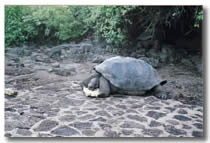Galapagos Flights and prices |Galapagos Hotels | diving tips | About us | FAQ | Booking and Payments | News
General Information | Yachts Information | History | Geology | Flora & Fauna | Ecuador
Oceanography | Islands | Diving | Reservations | home | sitemap
e-mail: Contact Us
US Toll Free # 1-800-426-0802
Outside US.or Canada 1-305-332-3099 Telefax 954 967 2547
|
The
Galapagos Islands lie in the Pacific Dry Belt, so most of the archipelago's
land area is covered by semi-desert or desert vegetation. Only the
higher parts of the larger islands receive enough rain to be considered
tropical and lush. There are roughly 600 native taxa (species, subspecies
and varieties) of vascular plants (42% are endemic) and some 190
species introduced by humans. Here we list the more common and better
known plant species, grouped together according to ecological zones.
|
Galapagos Flights and prices |Galapagos Hotels | diving tips | About us | FAQ | Booking and Payments | News
General Information | Yachts Information | History | Geology | Flora & Fauna | Ecuador
Oceanography | Islands | Diving | Reservations | home | sitemap
Copyright © 2008 Galapagos Divers. All rights reserved.
 Flora
& Fauna
Flora
& Fauna